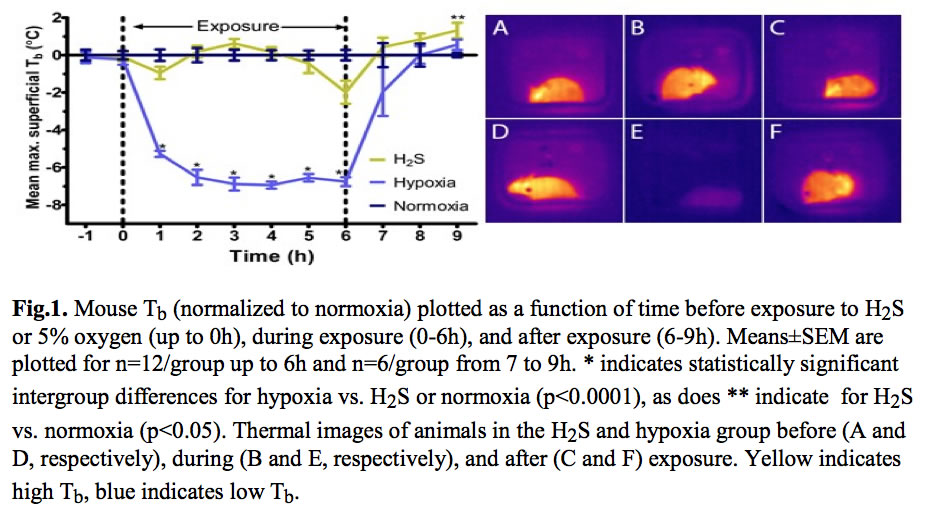OP 191. Hydrogen Sulfide (H2S)-Induced Hibernation is a Result Of Hypoxia Rather than H2S-Related Pharmacology
S. Hemelrijk, M. Dirkes, M. Heger, T. van Gulik
Chair(s): Modise Koto, Denise Dufrane & Andrea Ferencz
12:20 - 12:30h
at Erszebet Room (A)
Categories: Innovative Surgical Research, Novel Techniques and Product, Intensive Care in Surgery, Oral Session
Session: Oral Session XX - Innovative Surgical Research II
Background
Hibernation is a defense mechanism of some species to cope with stress. Hibernation induction involves hypothermia, which leads to hypometabolism and suspended animation, although the exact mechanisms are elusive. A 2005 Science paper showed that mice exposed to H2S drop their body temperature (Tb), resulting in a hypometabolic state as evidenced by a decreased CO2 production and O2 consumption. As hypoxia seems to have similar hypothermic effects in mice, the hypometabolic potential of hypoxia was compared to that of H2S.
Material and Methods
Female C57BL/6 mice (n=36) were exposed to H2S (80ppm, n=12), hypoxic (5%O2, n=12), or normoxic atmosphere (21%O2, n=12), respectively, for 6h. From 1h before until 3h after exposure, Tb was hourly determined for 10min by thermal camera. The mean±SEM maximum superficial Tb was calculated per time point per group. Based on homoscedasticity either a one- way ANOVA or KruskalWallis test was performed to compare outcomes. Data were normalized to normoxia (control).
Results
Experiments were performed at a mean±SD ambient temperature of 21.3±0.7°C. After 1h of exposure, hypoxia-exposed animals exhibited a decreased Tb compared to H2S- and normoxia- exposed mice (Fig1), which persisted during the entire hypoxic period (p<0.0001). After 1h of recovery, the mean Tb of hypoxia-exposed animals returned to baseline, i.e., to levels of H2S- and normoxia-exposed animals. The mean Tb of H2S-exposed animals did not decrease significantly compared to normoxia.
Conclusion
Hypoxia and not H2S is responsible for the hypothermic and therefore most likely the hypometabolic signaling in mice exposed to H2S.

